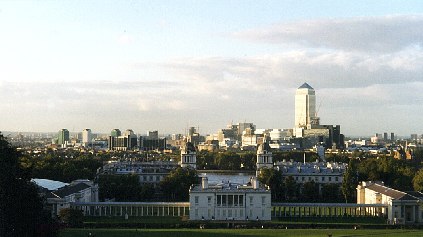12:00 PMT?

Image © Smithsonian Institute 1993.
Tax harmonisation, a common market, EU-wide laws: the trend is for ever-increasing standardisation across Europe. Ironically, there is currently a popular rebellion in France against one of the earliest pan-European standards, the Prime Meridian - the line of longitude from which all time zones are referenced.
Currently, global time is measured with respect to the meridian that passes through Greenwich, near London, from which the world measures its time zones (GMT stands for Greenwich Mean Time).
However, the French have a historical claim to a meridian that passed through Paris, from where they used to measure time. As the millennium approaches, France has decided to celebrate "Le Meridien", marking out their line of longitude with trees and olive groves and holding a mass picnic to link the 337 towns and villages along the 960 miles of Le Meridian.
Will this action have any effect? The world is not about to switch from GMT to "PMT", but at the very least the thousand mile line of trees will be the only meridian line visible from space!
Coda: The French Meridian

Today's view from Greenwich Old Royal Observatory, with the National Maritime Museum and Canary Wharf tower.
DHD Photo Gallery
Why does France have its own meridian? The answer lies in a political struggle of the 19th century.
Everybody knows that it's noon when the Sun is directly overhead. But because the Earth rotates, people in London see the Sun overhead just a few minutes earlier than people in Cornwall do. (London is to the East of Cornwall, and the Earth rotates towards the East, so London gets to see the Sun first.) Originally, time was measured this way everywhere, so every single town and city had its own so-called "local time" defined by when the Sun was overhead.
But when the railways arrived in the 1850's and 1860's, this caused headaches. How can you write down a railway timetable if "local time" is different at every single stop on the line? The only realistic solution is to choose just one place in the country at which to measure when noon occurs, and use that measurement for all the times on your timetable. In Britain, the Royal Observatory at Greenwich, in London, was chosen to be our centre of measurement. That's where the expression "Greenwich Mean Time", or GMT, comes from.

The Louvre, Paris.
Caroline Skene / DHD Photo Gallery
But other countries, not surprisingly, chose their own cities. Every country measured time in a different way: for example, the French measured noon at the Paris Observatory, which was 9 minutes and 21 seconds ahead of Greenwich. Something had to be done to avoid a proliferation of methods of measuring time, and in 1884 a worldwide conference (arranged by the President of the United States of America) resolved that Greenwich was to be the Prime Meridian of the world, so that all clocks worldwide would be set by it. Of the 25 countries who attended the conference, only San Domingo, Brazil and France did not vote in favour.
The British were of course very happy with this state of affairs. But the French were never really convinced, and still preferred their own time. Eventually of course they had no choice, and adopted GMT, but perhaps this new move ushers in a rethink on their part?
Footnote: In fact, even in Britain there have been several different Prime Meridians. The first went through a shed belonging to John Flamsteed, who was appointed as the first ever Astronomer Royal by King Charles II in 1675; it was a little way away from the current meridian. Subsequent Astronomers Royal had a tendency to move the meridian slightly so that it passed through parts of their own houses!
You can find out a lot more about the difficulty of measuring time, and its connections with ships getting lost at sea, in Longitude: The True Story of a Lone Genius Who Solved the Greatest Scientific Problem of His Time, by Dava Sobel.
The Time and Motion article in Issue 7 also discusses longitude.